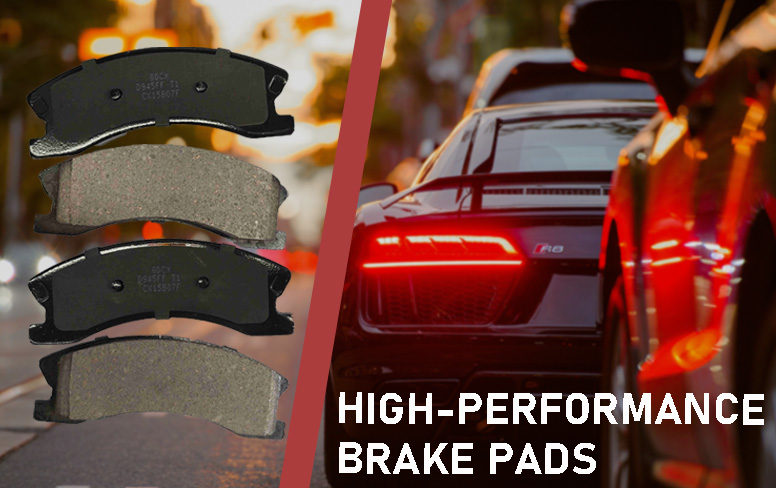+86 153 7870 3202
+86 153 7870 3202
Your car's braking system is crucial for safety, and recognizing when it's time for a rear brake pad replacement can mean the difference between a routine maintenance visit and expensive rotor damage. While many drivers focus on front brake maintenance, the rear brakes play an equally important role in stopping your vehicle safely. Working with a reliable rear brake pad supplier ensures you get quality components that will keep your car stopping effectively. Whether you're sourcing parts from a brake pad rear manufacturer or handling the replacement yourself, understanding these warning signs will help you maintain your vehicle's braking performance and avoid costly repairs down the road.
Table of contents:
When to perform a rear brake pad replacement: Avoiding costly rotor damage
How to inspect your rear brake pad thickness before it's too late
Common noises that hint at worn rear brake pad and what they mean
The timing of your rear brake pad replacement directly impacts your vehicle's safety and your wallet. Most brake pads have a lifespan of 30,000 to 70,000 miles, but rear pads often last longer than front pads because they handle less braking force. However, waiting too long to replace worn pads can cause them to grind against the rotors, creating grooves and requiring expensive rotor replacement or resurfacing. Ignoring these issues can also reduce braking efficiency, increasing the risk of accidents. The metal backing plate of completely worn brake pads can score the rotor surface, turning a simple pad replacement into a major repair job. Smart drivers monitor their brake pad thickness regularly and replace pads when they reach 3-4mm thickness, well before the backing plate makes contact with the rotor. Additionally, factors like driving conditions, vehicle weight, and driving habits can significantly affect pad wear rates, making regular inspections essential for preventing rotor damage and ensuring road safety.

Checking your rear brake pad thickness requires basic tools and can save you hundreds of dollars in rotor replacement costs. Start by removing the rear wheel and locating the brake caliper, which houses the brake pads on either side of the rotor. Most brake pads have a minimum thickness of 3mm, and you can measure this using a ruler or caliper by looking through the caliper opening. If the pad material appears thinner than a quarter-inch, it's time for replacement. Many modern brake pads also feature wear indicators - small metal tabs that create a squealing sound when the pad material wears down to replacement level. Visual inspection should also check for uneven wear patterns, which can indicate caliper problems or contaminated brake fluid. Cracked, glazed, or oil-contaminated pads need immediate replacement regardless of thickness, as they compromise braking effectiveness and safety.
Your car's brake system communicates problems through distinct sounds that experienced drivers learn to recognize. A high-pitched squealing or squeaking noise when braking typically indicates that your brake pads have reached their wear indicators, which are designed to alert you before the pads become dangerously thin. Grinding noises represent a more serious problem - this metallic scraping sound means the brake pad material has worn completely away, and the metal backing plate is now grinding against the rotor surface. This grinding can quickly cause permanent rotor damage requiring expensive replacement. Clicking or rattling sounds might indicate loose brake pad hardware or worn anti-rattle clips that need attention. A pulsing sensation through the brake pedal combined with noise often suggests warped rotors caused by overheating or delayed brake pad replacement. Any unusual brake noises warrant immediate inspection, as ignoring these warning signs can lead to brake failure and dangerous driving conditions.
Recognizing these five essential signs ensures you'll schedule your rear brake pad replacement before minor issues become major expenses. Regular brake inspections, attention to warning sounds, and monitoring pad thickness will keep your vehicle safe and your maintenance costs reasonable. Remember that brake maintenance is never an area to cut corners - quality brake pads from reputable manufacturers provide the reliability and performance your vehicle needs for safe operation.
RECENT NEWS
Custom Service
For the past 15 years, Sencheer is supplying the global market with custom brake pads using OE technology. Our customization range is wide and free, which covers logo, label, brand box, carton design, spraying code etc.
Contact Number
+86 153 7870 3202
Navigation
+86 153 7870 3202
Songjia Town Development Zone, Lingcheng District, Dezhou City, Shandong, China